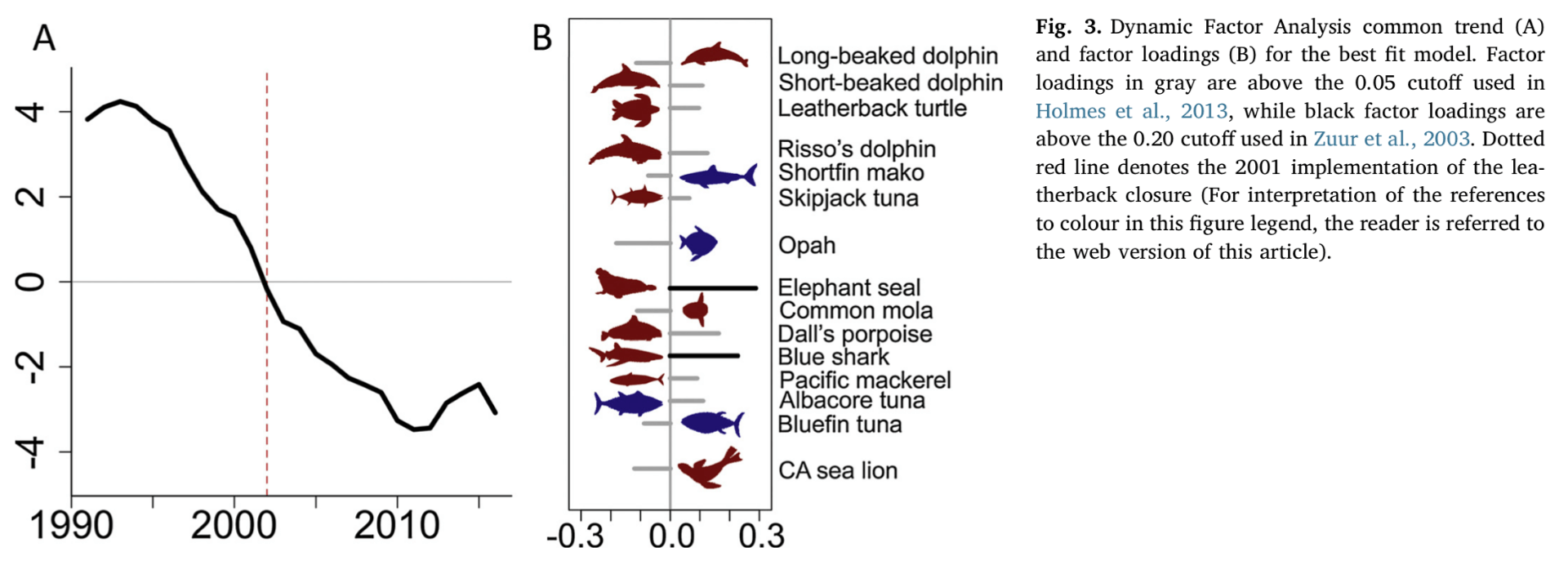A large spatial closure to protect leatherback sea turtles greatly effect the California Drift Gillnet fishery, but did not have unintended negative consequences. Also, a decline in CPUE and effort for the fishery preceded the closure.
Fisheries management interventions that protect certain species by redistributing fishing effort may generate unintended consequences for other species. In the California drift gillnet fishery for swordfish and sharks, a large spatial closure was implemented in 2001 to protect endangered leatherback turtles, which limited fishing effort to the Southern California Bight. Leatherback bycatch has since decreased, but the effects on other species have not been comprehensively examined. Here, we explore the effects of this closure on the community catch composition in the fishery and find that other protected species may have benefited, while catch per unit effort of major target species increased or was not significantly affected over the long term. However, a time-series analysis reveals that changes in catch trends across twenty species began at least five years before the closure was implemented, suggesting that previous regulatory measures or other drivers may also contribute to these trends. These results highlight the importance of comprehensive approaches that include the historical context when evaluating management outcomes.

